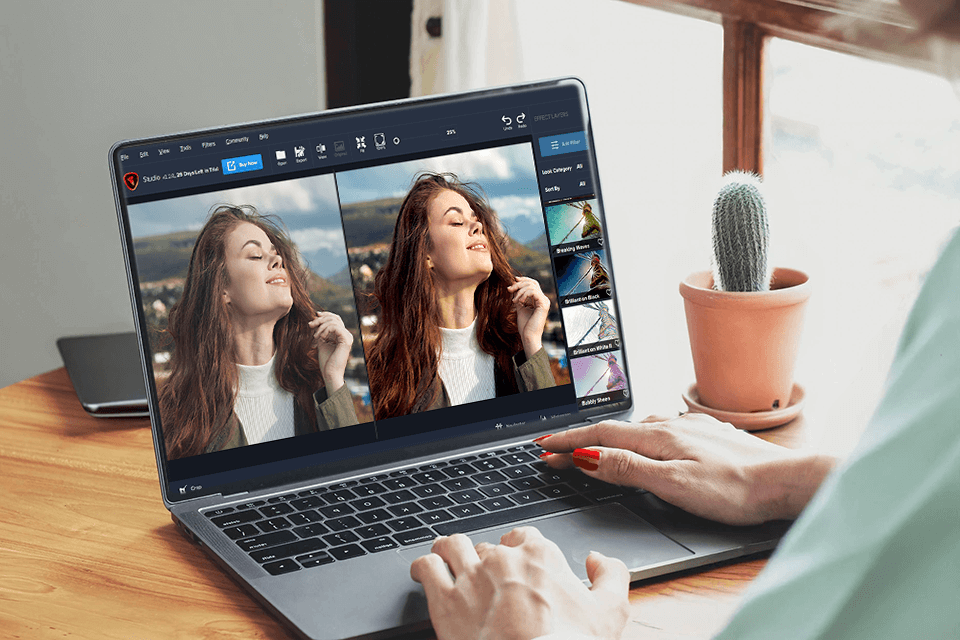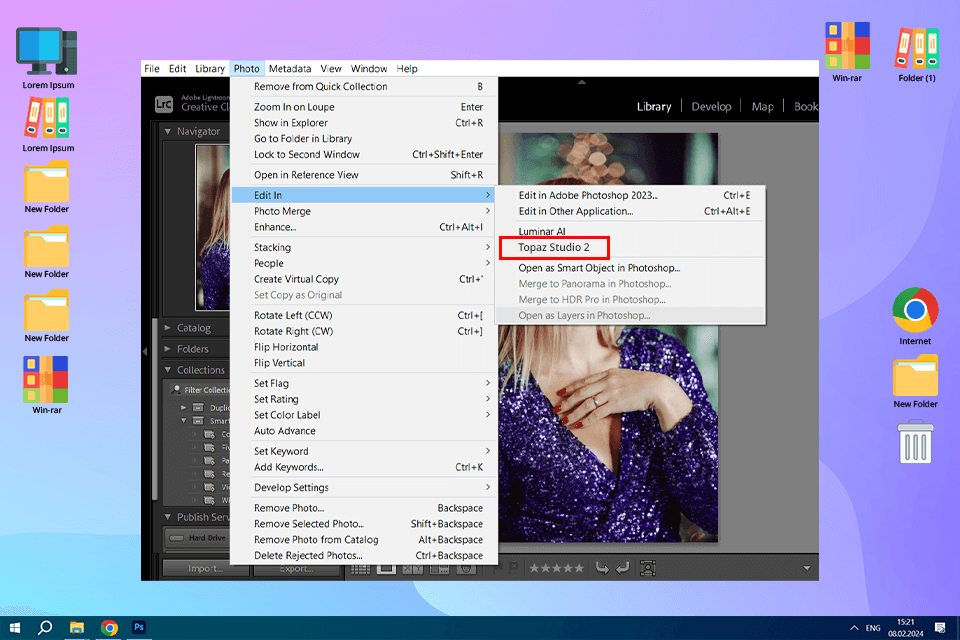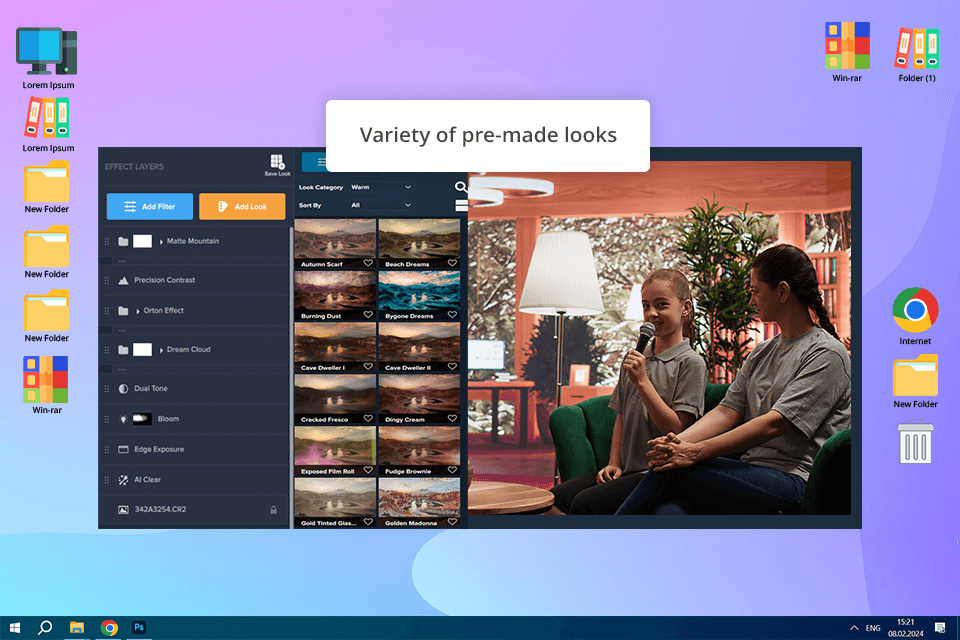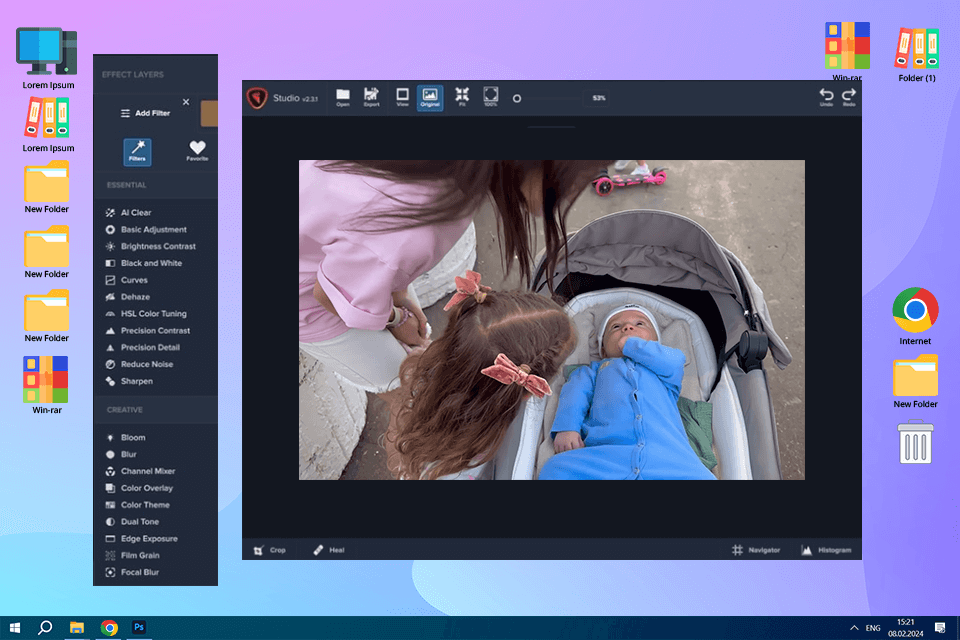
The AI Clear filter was a game-changer, and I still remember the excitement it caused. At the time, its ability to instantly reduce noise and sharpen blurry details seemed like real magic. This is why Topaz Studio 2 became my favorite tool for editing.
With this program, I could breathe new life into photos I’d previously considered unusable, which was a huge advantage when handling large volumes of images. It transformed my workflow, cutting down the hours I used to spend fixing noise and giving me more time to focus on creativity.
Before Studio 2, I relied on older plugins and more complicated techniques, which often felt slow and awkward. Getting creative or artistic results required a lot of extra work and didn’t always turn out as clean as I wanted.
Switching to Topaz software was a game-changer, as it gave me tools that matched my creative vision and made editing smoother and more efficient instead of slowing me down.
Topaz Studio 2 might not have all the flashy features of the newest software today, but it taught me a valuable lesson: how to master the tools at your disposal fully. The skills and insights I picked up while using it still come in handy, giving me a foundation for working with more advanced programs later. Plus, it works perfectly as a plugin for Adobe Photoshop and Lightroom, which makes it a really convenient addition to my workflow.
Topaz Studio 2 full version offers a powerful toolkit for creative photo editing. It not only helps turn your fresh ideas into reality but also gets you acquainted with the basics of artistic photo editing. Actually, the tool has everything you might need to create fantastic images.
|
File name:
|
topaz_studio_2.exe (download)
|
|
File size:
|
11MB
|
|
File name:
|
topaz_studio_2.exe (download)
|
|
File size:
|
15MB
|
|
File name:
|
topaz_studio_2.dmg (download)
|
|
File size:
|
24MB
|
|
File name:
|
topaz_studio_2.dmg (download)
|
|
File size:
|
26MB
|
|
File name:
|
topaz_studio_2_full.exe (download)
|
|
File size:
|
32MB
|
|
File name:
|
topaz_studio_2.exe (download)
|
|
File size:
|
39MB
|
|
File name:
|
topaz_studio_2_full.dmg (download)
|
|
File size:
|
41MB
|
|
File name:
|
topaz_studio_2_full.dmg (download)
|
|
File size:
|
49MB
|
✔️ Simplified artistic edits. When I first used it as a Photoshop plugin, it felt like an efficient way to achieve spectacular results without hours of manual adjustments. Studio 2 streamlined the process, making it much faster and easier to add artistic effects or textured styles, unlike the time-consuming step-by-step approach in Photoshop.
✔️ Effective noise reduction & sharpening. The AI Clear filter of Topaz Denoise Studio 2 is one of my favorite features. It not only reduces noise effectively but also makes images sharper. This filter was especially useful for cleaning up slightly noisy photos, a common issue in family photography where lighting conditions aren’t perfect. Instead of relying on multiple noise reduction techniques in Photoshop, this tool delivered cleaner, more natural results (particularly for portraits), saving me time and effort.

✔️ Seamless plugin integration. Another selling point of Topaz Studio 2 is that it seamlessly works as a free plugin for Photoshop and Lightroom. Since I mainly used Adobe products, Studio 2 fit right into my workflow without any hassle. I could easily move between Photoshop and Studio 2, applying artistic filters in Studio 2 and then going back to Photoshop for other edits. It was simple and worked perfectly.
✔️ Variety of creative filters. Studio 2 has a huge selection of artistic filters and adjustments for correcting exposure, and contrast, as well as options for more artistic edits like Impression and Glow.
❌ Filter customization limits. While the filters provided a solid foundation, I sometimes felt a lack of detailed control over certain effects. For example, with some artistic filters, fine-tuning specific elements felt a bit restricted compared to crafting similar effects manually in Photoshop. To achieve very precise or unique artistic results, I often combined Studio 2 filters with additional manual adjustments in Photoshop to get the perfect outcome.
❌ Clunky layer workflow within the plugin. One area where Studio 2 fell a bit short for me was its internal layer system. While it works seamlessly as a plugin, the layer management within Studio 2 itself felt somewhat limited compared to the depth and flexibility offered by Photoshop. It wasn’t as intuitive or versatile for more complex editing tasks.
While Topaz Studio 2 is a great tool, there are a few areas where it could improve:
Better performance. Improving speed, especially when working with large files, advanced AI tools like Topaz Sharpen AI, and complex filter stacks, would make a big difference. When editing high-resolution images with multiple layers and filters in Studio 2, the program functioned slower than I expected, especially on older PCs. Faster rendering and smoother previews would make editing more efficient, especially for professionals handling lots of images.

More refined filter control. Adding more in-depth customization options for each filter would be a huge improvement. This would give users more creative freedom and control, letting them adjust effects with greater precision to achieve their exact artistic goals. It would also reduce the need to switch between Studio 2 and other software, making workflow more convenient.
Non-destructive workflow options. Even though it works well as a plugin, adding more non-destructive editing features directly within Studio 2 would be a great upgrade. Features like adjustment layers or smart filters inside the plugin would allow for more flexible and reversible adjustments, giving users the ability to fine-tune their work in Studio 2 before finishing the editing process in Photoshop or Lightroom.

For those who can’t get Topaz Studio 2 for Mac or Windows at the moment, there are free alternatives that provide an excellent set of features for creative photo editing. Whether you’re new to editing or simply expanding your toolkit, these programs offer a variety of artistic features – all for absolutely no cost.
GIMP is a free, open-source program that’s been around for a while and works like a full-featured image editor. It’s a great free option similar to Photoshop. While it doesn’t have built-in AI filters like Topaz Studio 2, you can add effects like artistic filters, noise reduction, and sharpening through plugins. The downside is that setting up these plugins takes more time compared to the ready-to-use filters in Studio 2.
Pixlr is a versatile photo editor that you can use both online tool and as a downloadable app. I’ve tried both versions and for a free tool, it’s packed with features, almost like a lighter version of Photoshop. While it offers a good range of filters, effects, and even some AI-powered tools, it’s more of a general-purpose photo editor compared to Topaz Studio 2. Pixlr doesn’t specialize in the kind of advanced, artistic filters that Studio 2 is known for, but it’s still a solid choice for quick and easy edits.
Darktable is a powerful, free, and open-source tool perfect for photographers who prioritize image quality and control. Designed as a RAW developer and photo workflow application, it offers non-destructive editing and is incredibly powerful. I’ve used it to process RAW files from my camera, and it is similar to Lightroom in terms of functionality. Compared to Topaz Studio 2, Darktable shines in providing precise control over every detail of image processing like color, tone, sharpening, noise reduction, and more.
RawTherapee is another excellent free and open-source RAW processor that’s perfect for photographers who want full control over their image editing. It’s packed with advanced customization options and its main focus is to deliver top-notch image quality. RawTherapee has really impressed me with how effortlessly it lets you fine-tune and perfect every aspect of your photos. When compared to Topaz Studio 2, this program gives you full control over your RAW editing process. It offers a wide range of tools for demosaicing, noise reduction, color adjustments, and sharpening, making it ideal for those who want to explore the advanced, technical side of image editing.
Lastly, Polarr is another great option with a free version that’s worth checking out. It’s available both online and as an app, and it’s designed to be easy to use while still offering decent editing control. I’ve tried the free version, and it is perfect for quick edits and adding creative styles. While it focuses more on general image enhancements and stylish looks, it doesn’t have the highly specialized artistic filters you’d find in Topaz Studio 2. Still, it’s a handy tool for polishing your photos.